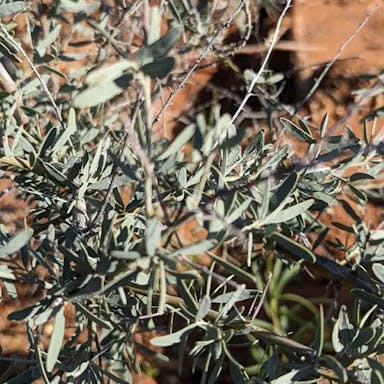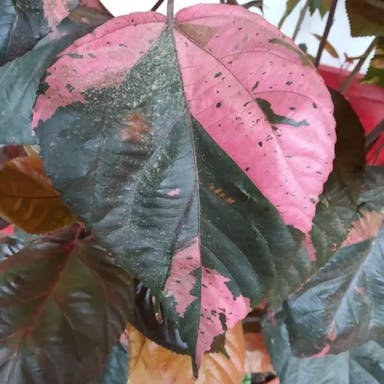Saffron spike is a tropical plant native to Central and South America. Striking, glossy green leaves with prominent white veins, giving it a unique appearance. The plant produces vibrant orange bracts that resemble spikes. This plant is grown as a houseplant due to its tropical orogins and sensitivity to clodness. It's easy to grow, requires bright indirect light, consitent watering, and high humidity.
Saffron spike
- Scientific name
- Aphelandra squarrosa
Basic Information
- Acanthaceae Family Aphelandra Genus Saffron spike Species
- Acanthaceae > Aphelandra > Aphelandra squarrosa
- 83%
- The Completeness of This Encyclopedia
Please help us complete the encyclopedia, Terrarium is a encyclopedia service to be completed with everyone in the world. Currently, this page is 83% complete. For more information on how to contribute, please click here.
- Shrub
- Height
- 30cm ~ 90cm
- Flower Color
- Leaf Color
- Anthesis
- summer, fall
- Sunlight Exposure
Full Sun Long hours of sunlight from morning to afternoon Partial Shade A location in the shade of a tree or where either the morning or afternoon is shaded Full Shade A place where there is no direct sunlight
- Partial Shade
- Hardiness Zones
This is an indicator to know to which zone each plant can winter. Knowing the zone of each plant gives you an idea of the cold temperature resistance when grown in the ground without a roof. 2: -42.7 to -40.0 3: -39.9 to -34.4 4: -34.3 to -28.9 5: -28.8 to -23.3 6: -23.2 to -17.8 7: -17.7 to -12.2 8: -12.1 to -6.7 9: -6.6 to -1.1 10: -1.0 to 4.4 11: 4.5 to 10.0
- 10
- Cold resistance
- Poor
- Heat resistance
- Fair
- Habitat of origin
- Brazil
- Growth Rate
- Normal
What is Saffron spike (Aphelandra squarrosa)?
What is Saffron spike (Aphelandra squarrosa)
Flower meaning
The flower language commonly used in America for the Saffron spike plant is: - Saffron spike: Beware, danger, or caution. An example of the language of flowers is: - Red rose: Love, passion, or romance. The language of flowers conveys subtle meanings, making it an elegant form of communication.
Calendar of Saffron spike (Aphelandra squarrosa)
Calendar
Saffron spike flowers typically bloom in late summer to early autumn in the U.S. Plant flowers at best in September vibrant color and bloom full. Blooming occurs once a year, lasts few weeks. To extend period, ensure adequate sun, water, nutrients. Removing dead flowers also promotes continuous bloom. Also, keeping steady water schedule and avoiding extreme temperature changes can help prolong flowering time.
How to grow Saffron spike (Aphelandra squarrosa)
Watering
About the Saffron plant, watering is needed once a week during growth. Keep the soil moist evenly but rain a lot every day. The top of the soil should be dry between watering. In winter, water only every 2-3 weeks. Check if the soil is dry by putting your finger in it. If it feels dry, it needs watering. Give a lot of water until extra water comes out the bottom of the pot. This stops water staying at the roots. Change how often you water based on temperature and dampness.
Soil and Fertilizer
Saffron spike thrives in well-drained sandy loam soil. The plant needs a sunny place and regular watering during growth. Give the plant balanced fertilizer in early spring before new growth. Put 1 tablespoon per square foot of soil. When it blooms, use a fertilizer with more phosphorus to help make flowers. Do not give too much fertilizer, because it can make too many leaves instead of flowers. Check the soil often to be sure it has the right nutrients for good growth.
Sunlight and Place
Saffron spike requires ample light. Give it at least 6 hours of direct sunlight daily. It prefers warm temperatures above 50°F. Keep it between 65-75°F for optimal growth. During summer, provide sufficient water and ensure good drainage to prevent waterlogging. In winter, protect it from frost. Place it where it gets lots of sunlight, like a south-facing window. Strong light promotes flowers and foliage.
Advanced Information of Saffron spike (Aphelandra squarrosa)
Pruning
Saffron spike enables hearty growth and lush flower creation with timed branch trimming. Cutting away lifeless stems or fibrous arms in the pre-spring chill, using sharpened shears for rapid healing, promotes vitality revival when new green arises. Careful checking post-pruning keeps pests and blights at bay. Proper disposal of clippings prevents spread of potential ills. Triming branch in late winter before sprouting enables open shapes and robust renewal when warming begins. Using well-honed snips makes for rapid recovery. Mindful inspection keeps health intact. Appropriate disposal of trimmings blocks spread of possible problems.
Planting and Harvest
Saffron spike is best potted in well-draining dirt with a pH of 6.0-7.5. Ensure to use the pot with drainage holes then place in a sunny spot. When planting, loosen the roots gently, place it in the center of the pot at the same depth as in nursery container. Fill the space with soil pressing softtly to secure the plant. Repot every 2-3 years in spring and transfer to a little larger pot. Repot immediately when root-bound or top-heavy.
Propagation
Saffron spike can be propagated through division, cuttings, and seeds. Cuttings are taken from healthy stems and rooted in appropriate medium. Sowing of seeds should be done in well-draining soil and kept moist until germination occurs. To increase the number of plants, begin by dividing the plant in early spring, taking cuttings in summer, and placing seeds in the ground in fall. Gather saffron spikes in autumn when the flowers open for further propagation.
Pests and Diseases
Saffron spike is susceptible to pests such as aphids, thrips, and spider mites can cause damage by sucking sap from the plant, leading to wilting and stunted growth. These pests can also transmit viral diseases, further weakening the plant. To prevent problems, monitoring of the plant for early signs of pest activity is needed. Maintaining proper plant hygiene, such as removing any damaged plant material promptly, can help reduce the risk of pest issues. Saffron spike is prone to fungal diseases like Fusarium wilt and root rot, which can be worsened by overwatering or poor soil drainage. These diseases can cause yellowing leaves, wilting, and eventual loss of the plant if left untreated. Applying fungicides cautiously and ensuring proper watering methods can help reduce the risk of fungal diseases in Saffron spike. The plant requires well-drained soil and should not be overwatered. Good airflow is also important to prevent fungal disease. Monitoring for pests and prompt removal of damaged foliage helps keep the plant healthy.
Habitat of Saffron spike (Aphelandra squarrosa)
Habitat
Toxicity of Saffron spike (Aphelandra squarrosa)
Health Benefits
- edible
- Inedible
- Toxic
- toxic
NO DATA
Toxic for dogs and cats
NO DATA
Q&A of Saffron spike (Aphelandra squarrosa)
- choice
Varieties A has yellow blooms. It stays short. Variety B has orange flowers. It grows a bit taller. For good seeds, pick ones that look healthy. Pick seedlings with green leaves and strong stems. Make sure roots are good, not bound up. Think about if you want yellow or orange flowers. And if you want short or tall plants.
0
0











